“SLS stands out for its capacity to produce durable, ready-to-use parts with exceptional mechanical properties. It has an essential role in product development and innovation, from rapid prototyping to low-volume production.”
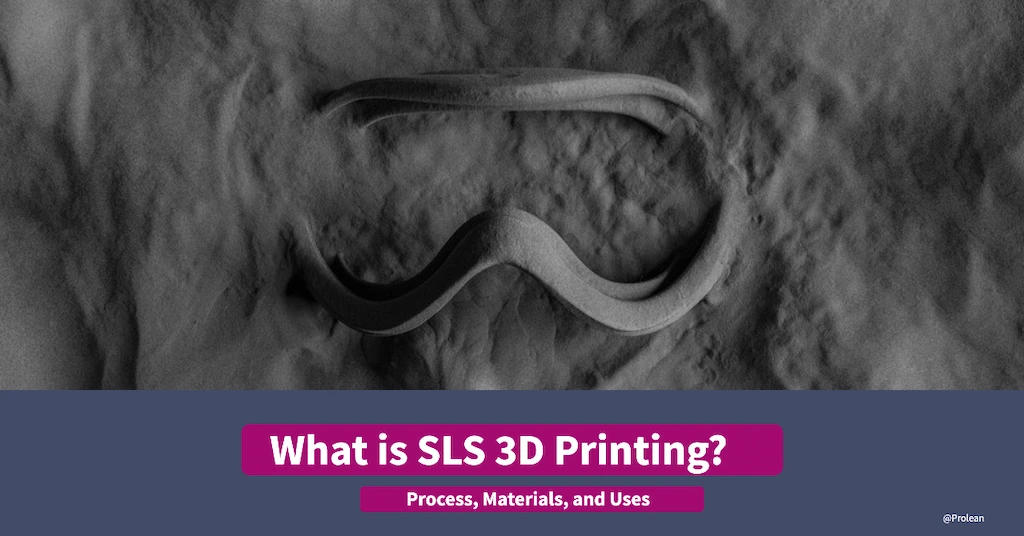
Additive manufacturing is becoming increasingly popular in industrial manufacturing due to the advancement and versatility of 3D printing technologies. SLS 3D Printing is one of the powder bed fusion techniques that creates a single part from a CAD file and computer-controlled instructions. It uses a laser beam that selectively fuses the polymer powder bed into the solidified part by repetitive sintering and adding the layers.
In many cases, 3D printing vs injection molding are comparable. The SLS 3D printing process is often considered a low-cost alternative to injection molding. Especially, for low volumes, you can eliminate the high tooling expenses.
This article will guide you through the process of SLS printing, including the setup, materials, and when it can be the best manufacturing method for you.
What is Selective Laser Sintering (SLS) 3D Printing?
Selective laser sintering 3D printing or SLS 3D printing is an additive manufacturing process that converts a CAD (3D) model into physical items by fusing the polymer powder with a CO₂ laser beam. The laser beam selectively fuses the layer of fine powder on the build chamber, it binds the powder together and solidifies that selective portion. Then, subsequent layers are added on top with the repetitive cycles until the final shape is built.
You can understand this by comparing it with the DMLS Method. In DMLS 3D printing, metal powder is sintered by laser as SLS does with polymers and ceramics. Additionally, you might be confused with the layer deposition. First laser sinters the foundation layer and the solidified section goes down, the laser fuses another layer over the pre-sintered one, and the process goes on.
Here, the movement of the laser head or selective sintering is carried out with the pre-loaded digital instructions on a 3D printer machine.
Try Prolean Now!
How does SLS 3D Printing Work?
The SLS 3d printing process begins with spreading a polymer powder layer on the floor of the building chamber using the recoater mechanism ( also called overcoat). Meanwhile, the attached heating system heats the powder below the sintering temperature.
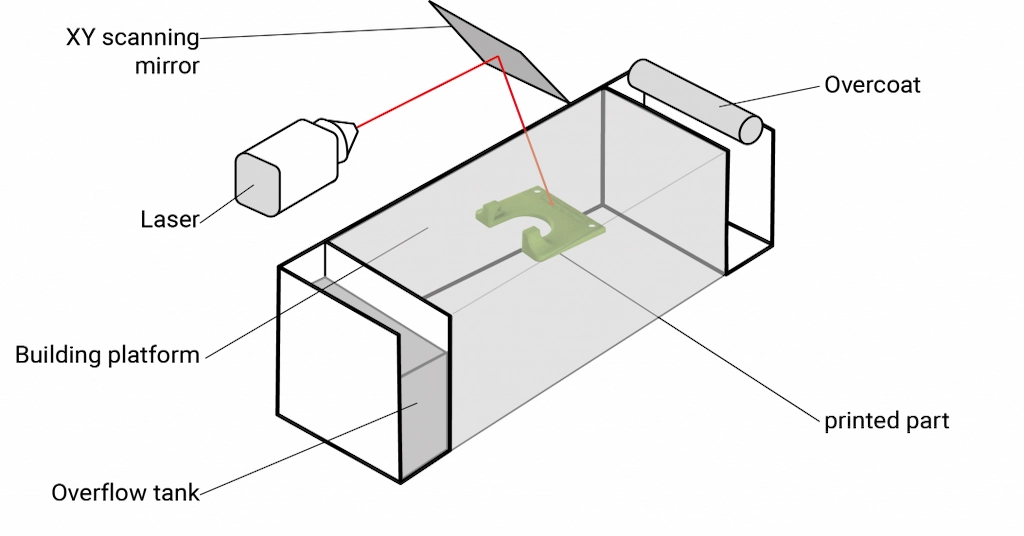
SLS 3D printing setup
A set of scanning mirrors directs the laser beam from the source towards the powder bed to selectively sinter and fuse the powder particles layer by layer. The laser traces the cross-sectors and continuously builds the Laurs until the desired geometry is achieved. Furthermore, the overflow tank collects the excess powder that is spread during the recoating process. Unlike DMSL, it does not need a support structure. Instead, the unfused powder acts as the printing support.
Steps of SLS Printing
- Preparation of SLS Printing File
The first step is creating the 3D model of the part that you want to print. CAD software is used to create detailed 3D drawings. Then, the file is converted into STL format, a format that an SLS 3D printer can read. STL or OBJ formats include information like printing layer structure, print time, etc.
- 3D Printer and Powder Setup
A thin layer of polymer powder is placed in the printing (build) chamber and toolings are fixed, such as connecting the continuous powder supply mechanism, prepaid the STL file for execution, etc. Next, the laser and build plate(foundation) are aligned to ensure precision.
- Printing Process
The SLS printer’s built-in system preheats the chamber below the fusing temperature, and the laser sinters the selective portion of the dispersed layer on the chamber foundation. The machine dictates the laser head motion and time-based on uploaded files and instructions. The laser fused the foundation layer and continuously subsequent layer (up to 200 µm). During the process, the powder delivery system continuously supplies the powder layers.
- Cooling
After printing of all layers, the built part is left in the chamber for cooling. It retains the original material properties after cooling down to room temperature.
- Post Processing
Once the part is cooled, it is ejected from the building chamber and excessive powder is removed. Next, bead blasting, sandblasting, grinding, polishing, or other post-processing can achieve the desired surface smoothness. Additionally, painting, coating, or other finishing are also compatible.
Can I Use SLS Technology for All 3D Printing Materials?
SLS 3D printing is predominantly used for plastic 3D printing materials, sometimes for ceramics. Nylon, polyamide, elastomeric thermoplastics, and many other plastic or plastic-filled resins are popular for SLS printed parts.

Nylon prosthetic prototypes
Here is the list of common materials for selective laser sintering 3D printing;
Polyamide
PA6, PA 11, and PA 12 are the typical polyamide types used for SLS, PA6 offers good wear, abrasion, and fatigue resistance. PA 11 is flexible, ductile, and heat resistant. Meanwhile, PA12 is known for its high tensile strength and dimensional stability.
Polypropylene
It is a tough and high-strength thermoplastic polymer. Polypropylene powder can print durable, flexible, and chemically inert components for different applications.
Nylon
Nylon is a popular polymer for SLS printed parts with high stiffness. Besides the standard nylon, Glass, carbon fibre, and aluminum-filled nylon powder are also used as a printing material.
Low melting point, excellent printing finish, and high strength-to-weight ratio are other key benefits of nylon.
Thermoplastic Elastomers
Thermoplastic elastomers refer to rubber-like plastic materials with lightweight, elastic recovery, and good temperature resistance. Thermoplastic Polyurethanes (TPU), Styrenic Block Copolymers (SBCs), Thermoplastic Polyolefins(TPO), and other variations are available for SLS 3D printing.
Other Materials
Besides the polymers mentioned above, other various SLS 3d printing materials are available, including polymer-coated metal powders, castable polystyrene, aluminide, etc.
SLS 3D Printing Applications
SLS 3D printing application examples
SLS technology is popular for prototyping, rapid production, and low-volume batches of different industrial and research items. For example, design proofs and models, 3D printing automotive parts, low-weigh aerospace components, casting patterns, and electronics components housing.
Here is a table illustrating SLS 3D printing applications;
| Industry | Why SLS? | Application Examples |
| Automotive | High precision, durable materials, and complex designs | Prototypes, air ducts, brackets, dashboards, and clips. |
| Aerospace | Lightweight, strong parts, and ability of strict quality control | Engine components, UAV parts, and air ducts. |
| Consumer Goods | Customization, fast production, etc. | Shoe soles, wearable devices, and electronics casings. |
| Medical | Biocompatible materials, custom-fit products, and intricate designs. | Prosthetics, orthopedic implants, dental models, and surgical guides. |
| Industrial | Functional prototyping, rapid production, and high-stress parts | Tooling jigs, brackets, housings, and machine components. |
| Electronics | Fine details and high-quality finishes | Enclosures, connectors, and internal electronics housings. |
SLS 3D Printing Vs Injection Molding Vs CNC Machining
Unlike 3D printing, CNC machining is a subtractive manufacturing process that creates the designed part by removing the material from the workpiece with computer-controlled machining tools. The main difference in 3D printing vs CNC machining is that CNC can handle materials beyond plastic polymers, including metal, alloys, and composites. On the other hand, 3D printing creates complex, lightweight designs with minimal material waste.
Furthermore, injection molding forms the desired part by injecting the molten material into an injection mold. Like the SLS 3D printing application, it also makes complex polymer items. However, it requires a high upfront investment for injection mold and other related tooling.
Try Prolean Now!
Are You Looking for Custom 3D Printing Prototypes and Parts?
If you have decided to use SLS 3D printing for your prototyping or industrial manufacturing project, we can help you convert your 3D model into a physical and functional replicate. Our custom 3D printing facilities can address 50+ types of polymer powders,
We have advanced 3D printers and a skilled team of engineers with a decade more experience in additive prototyping and manufacturing. The use of the latest software version for design slicing and rigorous quality control makes us a trustworthy 3D printing manufacturer in China.
We will provide you with a detailed quote and project-related consultations before starting the production process. So, upload your design to our online platform today!
Conclusion
Overall, the SLS 3D printing process is precise, fast, and cost-effective for prototyping and small-volume production of various plastic and rubber components. It is a suitable technology for automotive, aerospace, tooling, electronics, research and innovations, consumer goods, and other various sectors. However, the appropriate slicing of 3D models and the use of the right process parameters are essential to get the closest replica of the uploaded design.
FAQs
What are the surface finishing options for SLS 3D printed parts?
Surface finishing options for SLS parts are sanding, vapor polishing, dyeing, painting, and media blasting.
Does SLS printing require a build support structure?
No, SLS printing does not require a support structure. Instead, the unsintered powder surrounding the part provides support without additional structures.
Is SLS printing more expensive than injection molding?
SLS printing is more cost-effective for low-volume production and prototypes. However, injection molding is cheaper for the mass production of plastic items.
Can I add colors to SLS printing parts?
Yes, colors can be added to SLS parts by dyeing or painting them post-production. SLS typically prints in natural white or grey nylon, and additional colors are applied after the print is complete.

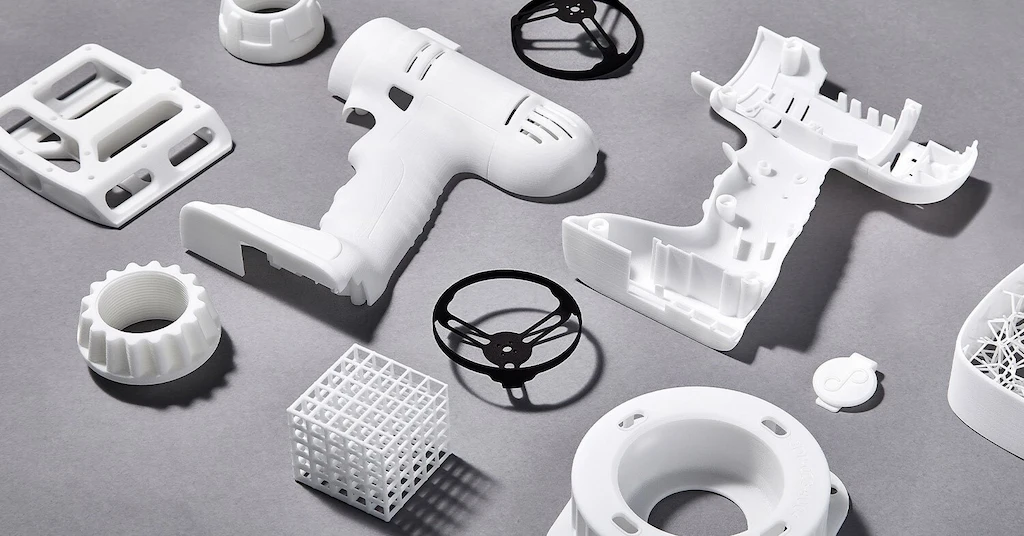
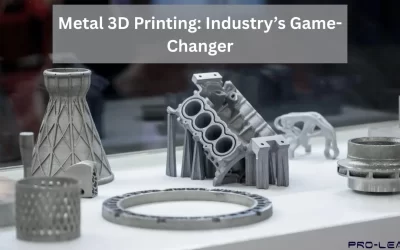
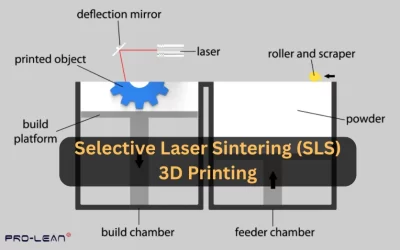

0 Comments